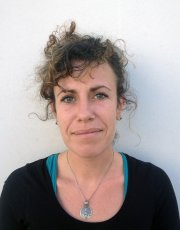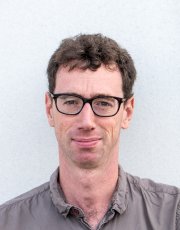
Temporary palliatives to an ongoing humanitarian need: MSF’s intervention in Dunkirk
Angélique Muller & Michaël Neuman
This article was originally published in Humanitarian Exchange Magazine #67 in September 2016. In this paper, Angélique Muller and Michaël Neuman attempt to explore the lessons learnt through examining the decisions as well as the difficulties MSF encountered in its provision of assistance to migrants in Grande-Synthe.
Many towns and villages in northern France, including Calais and more recently Grande-Synthe, have provided shelter since the mid-1990s to migrants on their way to the UK. With the arrival of migrants transiting from North Africa and Turkey, their numbers rose sharply during 2015 – from several hundred in Calais in March 2015 to over 6,000 by the end of the year, and from a few dozen to more than 2,000 in Basroch camp in Grande-Synthe. This increase should have come as a surprise to no one, particularly anyone following developments in the Syrian conflict or studying migration flows, but the French government’s state of denial led to yet more hardship for people reduced to living in deplorable conditions.
From quagmire to ‘humanitarian camp’
Grande-Synthe in France’s Nord Department has a population of 22,000. Like many others in the region, this former industrial town is undergoing a painful process of economic regeneration. Nevertheless, the local council was determined to provide decent living conditions and assistance to migrants (whose numbers fluctuated between 50 and 80 prior to June 2015) in the Grande- Synthe area. Damien Carême, who was a member of the Socialist Party before joining the Green Party, became the town’s mayor in 2001. Among his achievements has been his contribution to establishing a ‘Réseau des Elus Hospitaliers’ (Network of Hospitable Mayors) to facilitate the hosting of migrants in the Nord Pas-de-Calais region.
While migrants had been seeking shelter in the Basroch woods since the 2000s, summer 2015 saw a considerable increase in new arrivals, culminating in a surge by the end of the year. At the end of 2015, over 2,500 people were living in Basroch, mostly Iraqi Kurds, but also Syrians, Afghans, Iranians, Vietnamese and members of Kuwait’s Bedoon community.+ In October 2015, alerted by reports of increasing numbers of migrants and the poor health and sanitation situation, associations and volunteers from the UK (Aid Box Convoy, Humming Birds and Refugee Community Kitchen), Belgium (Solidarity for All), Switzerland and the Netherlands (Rastplatz) joined local organisations working in the area, including Médecins du Monde (MDM), Carrefour Solidarités, Emmanüs, AMIS, Salam and Terre d’Errance.
Médecins Sans Frontières (MSF) deployed in Grande-Synthe in September, but we knew little about the actors involved, how they interacted with each other or what had been done in the past. MSF also found it no easy task negotiating its way among the numerous stakeholders on the ground, and navigating the intricacies of the French administration was unchartered territory. Relations with the volunteers, some of whom were unwilling to accept the vertical organisation favoured by MSF, were at times tense. Alternating with MDM, MSF delivered primary health care three days a week, provided logistical support to voluntary associations and endeavoured to improve the camp’s atrocious and steadily deteriorating sanitation. People smugglers commandeered and imposed a charge for showers installed by the town council, and, until January 2016, there was just one standpipe. The weather worsened rapidly, foretelling a sodden and muddy winter. The migrants put up small camping tents to provide some shelter.
The mayor of Grande-Synthe, Carême, received no response from the government to his increasingly frequent appeals for help with rehousing the migrants. Prime Minister Manuel Valls did not deem it necessary to answer or indeed even acknowledge receipt of letters from the town council appealing for assistance. This lack of response typified the government’s lack of concern for these ‘undesirables’, and its refusal to either acknowledge the problems the town hall was experiencing trying to cope with the influx or attempt to find a solution to the migrants’ predicament. In November, in view of the lack of government action, the mayor asked MSF for help with building a new camp on a nearby site. Carême and MSF also scheduled a press conference to announce their plans for the new camp, but the day before it was due to be held the mayor received and accepted an invitation to discuss the situation with the Minister of the Interior. This was considered a major breakthrough, as the government had consistently refused to contemplate long-term accommodation for the refugees.
By now it was the beginning of January. Many viewed Basroch as the ‘Calais Jungle, but worse’. Their tents flooded, people slept in a muddy quagmire in a camp that had by now come to resemble a gigantic rubbish dump. Illnesses caused by the cold (respiratory infections) and lack of hygiene (scabies and skin infections) were difficult to treat. People were living in inhuman conditions, driven by their only ray of hope – getting across the Channel. Far more migrants arrived than departed, with a few succeeding in getting to the UK and others relocating to temporary reception centres set up across France.
Thanks to the groundswell of solidarity from many associations and volunteers from all kinds of backgrounds, no lives were lost. There were over 40 mostly voluntary associations working in Basroch camp. Coordination was practically non-existent, with the exception of medical services organised by the Ministry of Health. For the most part, basic items and services, such as food, blankets, tents, heaters, fuelwood and schooling, were largely managed by volunteers. The lack of organisation, unplanned donations and control exerted by people smugglers led to real difficulties. At weekends, hundreds of people would arrive at the camp and distribute items as they saw fit, leaving others – including MSF, who would spend hours collecting rubbish on Mondays – to clean up the mess. To many at MSF, the waste was all the more unacceptable as the camp was less than 30 metres from a modest but well-maintained housing estate, a third of Grande-Synthe’s population lived below the poverty line and unemployment was almost 30%.
While MSF staff and others took care of day-to-day tasks in Basroch camp, construction began on a new camp several kilometres away, on a site known as La Linière. Soon an entire village designed to accommodate 2,500 people began to take shape. Long and narrow, and sandwiched between a railway line and a motorway, the site was far from ideal. Furthermore, MSF had no particular experience of setting up refugee camps, let alone in France. Tents or wood cabins? Should heaters be installed? How much space should be given over to communal areas? Should the camp be viewed as the foundation of a future village? How could ties be established with Grande-Synthe? How could architectural aspects be taken into account when speed was of the essence? The hesitations were as many as the U-turns.
Once construction began, the priority was to inform the migrants about their upcoming relocation. Meanwhile, Carême, the mayor of Grande-Synthe, insisted that the old site be razed to the ground. Despite its unease, MSF never spoke out clearly about this, saying instead that people could only be moved on a voluntary basis. Meanwhile, the government set up a Temporary Reception Centre (Centre d’Accueil Provisoire, or CAP) just outside the camp in Calais to accommodate some of its inhabitants. The centre’s use of palm print recognition technology and other harsh constraints highlighted the contrast with what was being accomplished in Grande- Synthe.
After seven weeks of construction and meetings, the camp at La Linière was ready to receive people from Basroch. The move itself began on 7 March and lasted three days. It was supervised by around 100 volunteers from various associations and 25 MSF staff. Using buses hired by the town hall, around 900 people were relocated on the first day, and by the fourth Basroch was empty. No police intervention was necessary. Over 1,300 people (numbers had decreased as some had gone to emergency accommodation and others to CAOs or to the UK) were now installed in the new camp in wood cabins with access to basic services such as toilets, showers and meals. Carême appointed volunteer service provider Utopia 56 to manage the site. Irony of ironies, a few days after the move Carême received an injunction requiring him to bring La Linière camp ‘up to standard’, as the government considered that the safety of its residents was at risk. In the meantime, the authorities had begun razing the southern – and busiest – part of the Calais ‘Jungle’, leaving its inhabitants either to go to the CAP or to the northern part of the camp, or leave Calais altogether.
Conclusion
The successful logistical operation to relocate the residents of Basroch to La Linière camp enabled
– and was only possible because of – an improbable coalition of elected representatives, municipal officials, political activists and humanitarian workers. The episode demonstrates that the construction of a dignified space that includes congenial communal areas to accommodate and address the basic needs of refugees is achievable at reasonable cost. And who knows, it could even be an indication of the shape of future collaborative initiatives to foster the local integration of migrants in other French and European towns.
The neighbouring town of Téteghem, which for many years has also had to cope with migrants in transit, is a good example of how very hard it is for elected representatives to resist pressure from the national authorities and the public to remove migrant camps. In November 2015, at the behest of the town’s mayor and after a court ruling, the camp in the town, which was supported by volunteers and associations and accommodated 200 to 250 migrants, was flattened because of tensions and suspicions of trafficking related to clandestine immigration. However, shortly after the successful setting up of the La Linière camp, the mayor, an elected member of the Les Républicains party, expressed his regret at having razed the camp and praised his neighbour’s courage and perseverance.
The La Linière camp is a barometer of the power of public discourse and the ability to overcome fears regarding public opinion. Although it is difficult to gauge the views of Basroch’s inhabitants on the continuing presence of migrants in transit in their town – even more so as their numbers grew – we can attest to the incomprehension and resentment felt by some local people. That said, little or no violence against migrants has been reported, nor have militias been formed as they have in Calais. We believe that this is in part due to the efforts of the mayor to communicate both his determination to tackle people-smuggling and his compassion for the refugees, an appropriate police presence and the relationship established between the authorities and the migrants.
La Linière has resolved little, apart from enabling 1,000 people to escape the cold and mud. Thanks to the impetus and actions of numerous partner associations, a degree of social and collective life has begun to emerge. Nevertheless, residents’ sights remain resolutely set on the UK and there is still a great deal of tension – among the migrants themselves, between people smugglers and migrants, and at times between migrants and aid organisations. As for the migrants’ prospects, their options are more than limited. In a context where the countries of Europe continue to ignore the consequences of their actions, and their migrant policies are confined to erecting fences, the Grande-Synthe camp can only be a solution that is as much makeshift as it is inadequate.
To cite this content :
Angélique Muller, Michaël Neuman, “Temporary palliatives to an ongoing humanitarian need: MSF’s intervention in Dunkirk”, 24 novembre 2016, URL : https://msf-crash.org/en/camps-refugees-idps/temporary-palliatives-ongoing-humanitarian-need-msfs-intervention-dunkirk
If you would like to comment on this article, you can find us on social media or contact us here:
Contribute

